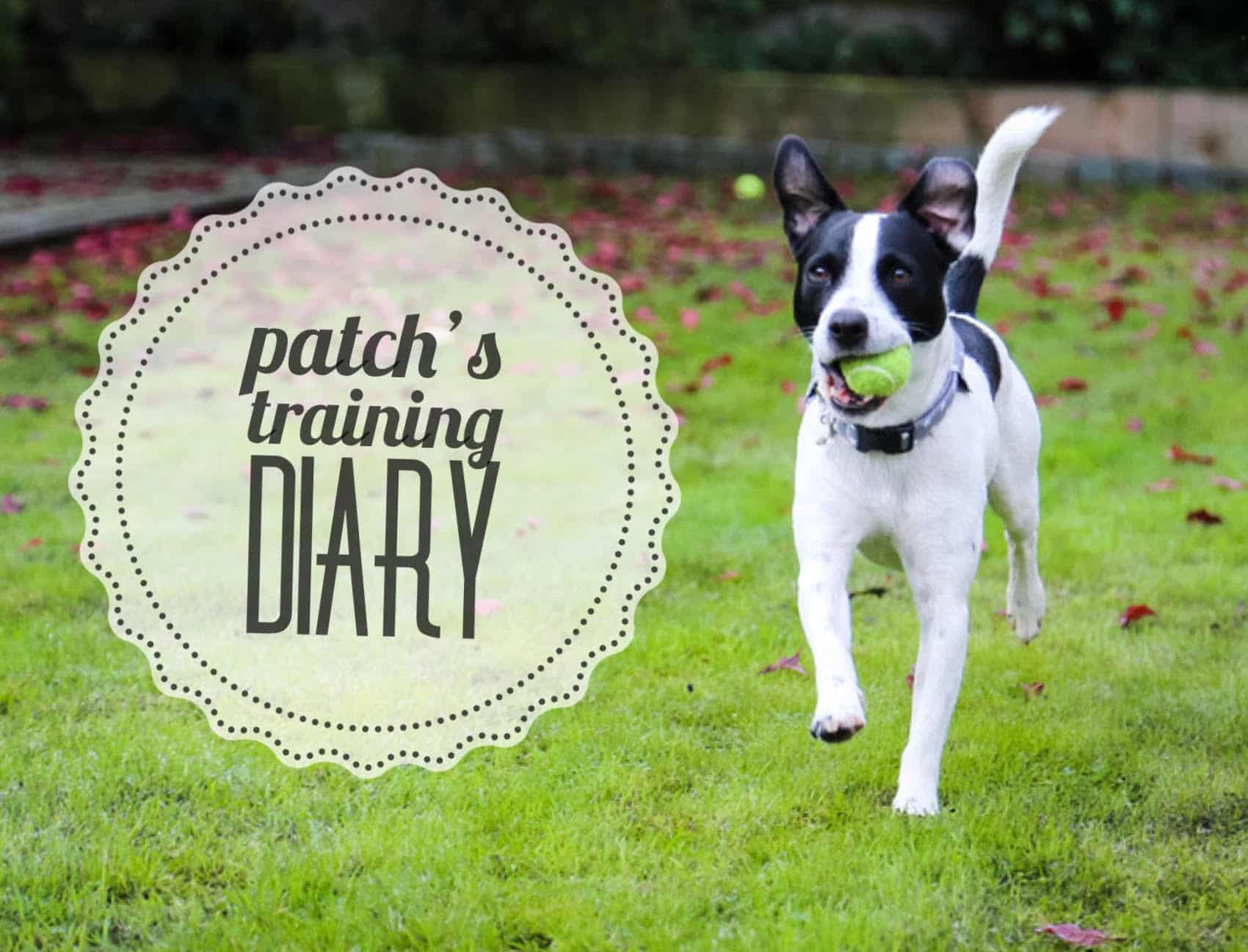Having a well trained dog who comes back when you call them and is well adjusted around other animals and people is something we all hope for
So when we adopted Patch we decided we wanted to work with a behaviourist from the outset.
It wasn’t that he had any terrible issues we needed to overcome – far from it – Patch is a lovely, friendly and happy little dog.
When we adopted him, Paul, who was caring for him and arranged for him to come and live with us, told us he needed some work on his recall.
As a young dog – Patch is only two – he said he also got very excited around other dogs.
I asked one of my contacts Dominic Hodgson, author of My Dog Superhero and Worry Free Walks, if he could recommend someone to help us and he put me in touch with Sue McCabe from Muttamorphosis.
Sue is a Newcastle based behaviourist with over 20 years experience and runs classes and one to one sessions where dogs learn in a fun environment.
I decided to go for the one to one option to begin with. Sue sent us an assessment form to find out a little more about Patch and arranged to visit us at home.
We covered so much in the first session, and I wanted to share his training diary in case what we’ve learned is helpful for other new dog owners – particularly terriers.
I’m going to focus on the key things Sue told us to concentrate on for our first few weeks – and how Patch has progressed.
1. Crate training
We have a crate in the flat which we bought for Daisy last bonfire night so she had a comfy den to go to if she felt scared.
Patch had been wandering in and out but not as part of any kind of routine.
Sue told us using a crate can be helpful with young dogs.
She explained: “Start by putting him in the crate when he can see and hear you, then when he can just hear you, then the aim is for him to be there when he can’t see or hear you.
“Create a positive place, where Patch can go to enjoy his Kong and have quiet time.”
Now Patch settles well in the crate after his morning walk and usually snoozes. We leave the door open so he can choose to go in if he likes.
And if there are times when I need to pop him in there and close it if someone is at the door, or if I’m cleaning, he’ll happily lie in there.
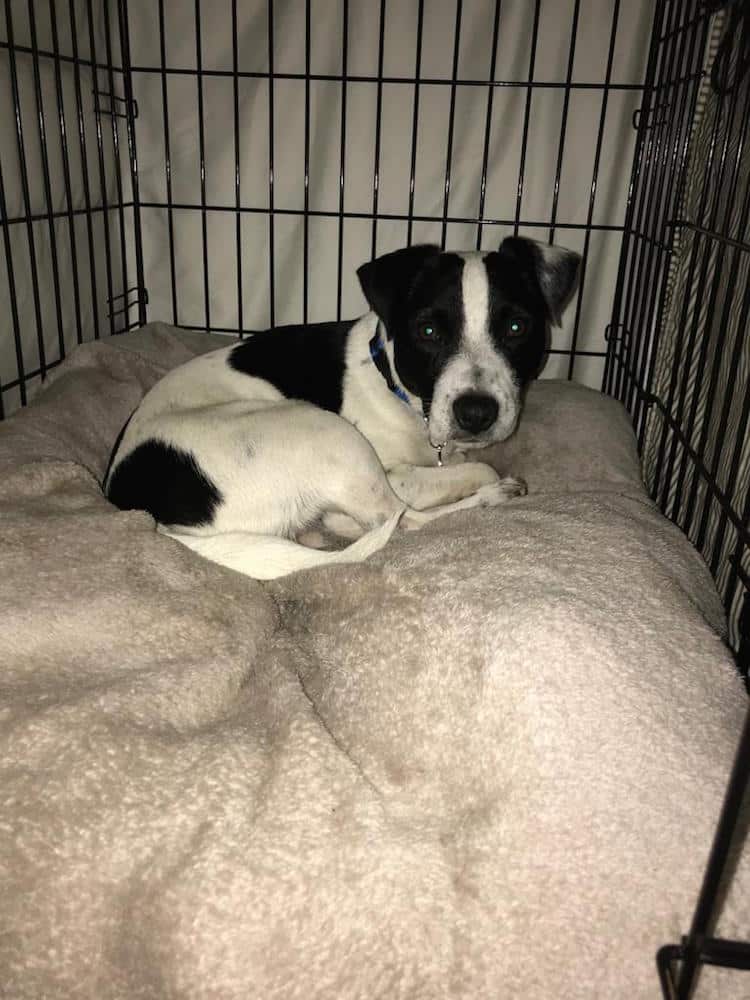
2. Meeting other dogs
Patch gets so excited when he sees other dogs and while this is very sweet, it’s not ideal and can be dangerous.
Having been the owner of an anxious dog – Daisy was very frightened towards the end of her life – I’m aware of how unfair it is for them to bound over to other dogs.
We had been letting Patch say hello to other dogs when their owners had said he was allowed to. But Sue explained that to help him become well adjusted this needed to stop.
Sue advises. “Only let him greet the quieter dogs.
“Patch needs to be calm first and if a dog approaches, either stay still or lead him away before they start jumping around together. ”
This has helped Patch to focus on me. When we first adopted him he was so distracted I was worried he was deaf! Now I feel we’re making progress.
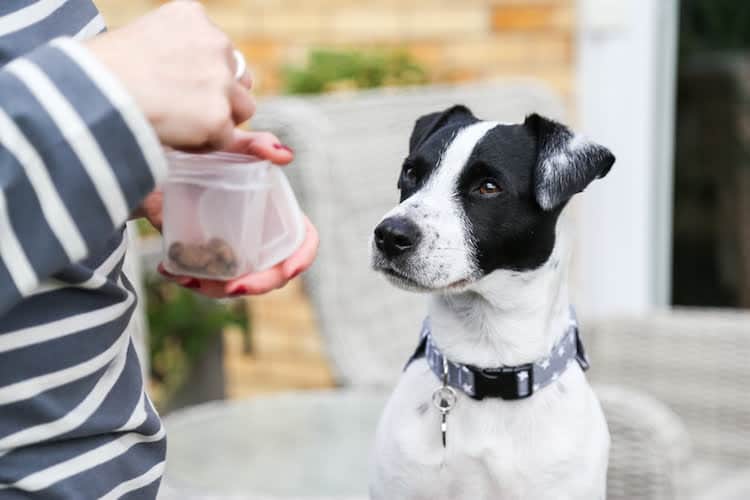
3. Playing with your dog
Sue advised us to play ‘tug games’ with Patch which can help with recall.
“The more games you play the better,” Sue said. “Make yourself part of the game and play in short bursts, for five minutes at a time.
“Have as much fun as you can, with lots of ‘good boy’ and encouragement and ensure all he cares about is you and the toy.”
Patch has loved playing with his Chuck It Duo Tug (two balls attached to each other) in the house and I feel like he’s a lot more interested in me which is nice!
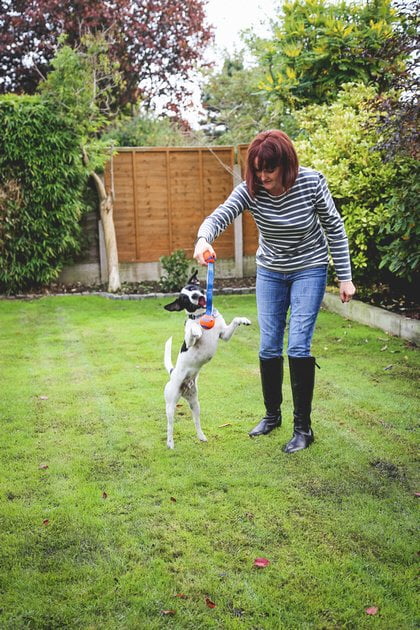
4. Food circuits
I’d never heard of these but playing food circuits in the house is a great way to build up recall with few distractions.
Use a combination of food and high value treats and get you dog to chase you when they know you have the food in your hand.
We mix this up with throwing Patch’s food/treats and ensure he has lots of praise for running to us with enthusiasm.
Patch has been absolutely brilliant doing this in the house, so the next stage is taking it outside with a long line – wish me luck!
5. Restraint recall
Play this if there’s two of you. Tommy’s girls Millie and Hannah love being part of Patch’s training.
One holds the dog and the other runs away with their toy or treat. Sue says: “Give them verbal praise before the treat and always end the game when they’re still enjoying themselves.”
As with the other games, Patch is enjoying this. He’s seeing us all as people he has fun with and this is really helping with his progress.
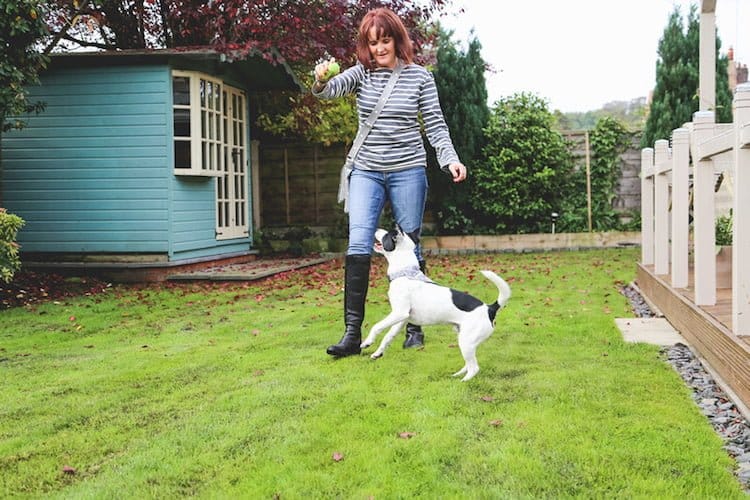
Conclusion
I won’t lie – I was worried about Patch and felt teaching him recall was so far out of our reach and even Tommy feared Patch might always have to be on a lead.
Now though, we’re part of him having fun. I always carry his treats and toys so wherever we are he can play with them and this is something he loves – and it means I can get his attention.
We’ve learned how important play is and that if we want to achieve our goals, we have to be the most fun, exciting thing in Patch’s world.
And that’s a pretty lovely thing to aspire to isn’t it?
To find out more about Sue, visit her website, www.muttamorphosis.co.uk
If you found this post interesting you might enjoy Training a rescue terrier part two and Training a rescue terrier part three.

